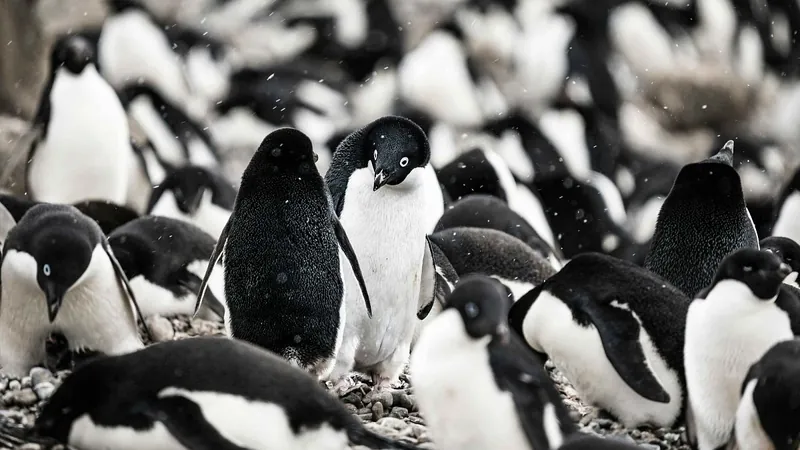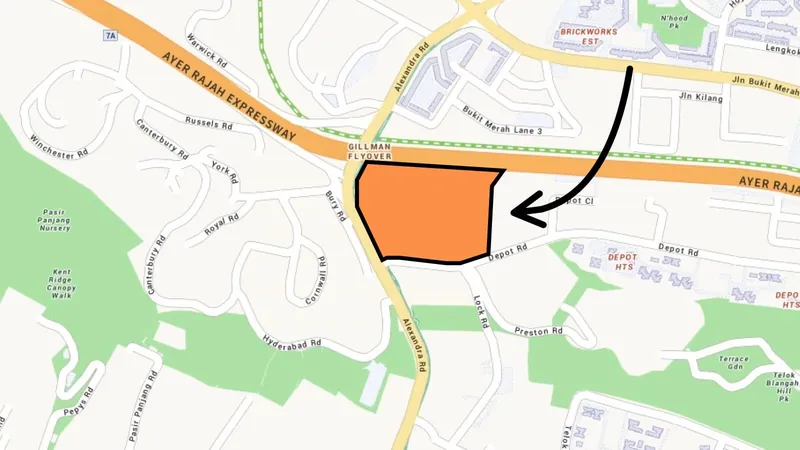
Penguin Poo: The Unexpected Hero in the Fight Against Climate Change
2025-05-23
Author: Nur
Think penguins are just adorable creatures waddling around in the cold? Think again! It turns out, these charming birds might just hold the key to combating global warming through their, shall we say, natural byproducts.
Ammonia Magic: How Penguin Waste Creates Cooling Clouds
In a groundbreaking study published in *Communications Earth & Environment*, researchers have uncovered that the ammonia excreted from penguin guano—yes, their dung—might play a significant role in cloud formation, which in turn helps insulate our planet and prevent sea ice from melting.
A team from the University of Helsinki spent two months on the Antarctic Peninsula, closely monitoring the atmosphere near a massive colony of 60,000 Adélie penguins. When the wind blew towards their colony, ammonia levels spiked dramatically, surpassing normal levels by over 1,000 times.
This ammonia interacts with sulfur gases released by marine phytoplankton, creating aerosol particles that act as cloud seeds. These clouds reflect sunlight, thereby cooling the Earth's surface and potentially slowing down the melting of glaciers and retreating sea ice. Lead author Matthew Boyer stated, "There is a deep connection between ecosystem processes—like ocean phytoplankton activity and penguin populations—and atmospheric processes that can impact the local climate."
An Ecosystem in Peril
Even after the penguins migrate, their lingering guano continues contributing to ammonia levels, sometimes resulting in mysterious fog banks that can last for hours. This fascinating find underscores the interconnectedness of Antarctic ecosystems and the planet's climate.
However, as global temperatures rise and ice melts at alarming speeds, habitats are threatened—not just for wildlife like penguins, but for the natural processes that depend on them. The Antarctic acts as a crucial stabilizer for global temperatures, serving as both a carbon sink and a driving force behind ocean currents. Yet, it is among the fastest-warming places on Earth.
Take the Thwaites Glacier, often dubbed the 'Doomsday Glacier,' which could increase sea levels by up to three meters if it collapses. Understanding how local processes, like penguin guano, affect global climate systems has never been more urgent.
Innovative Solutions for a Warming World
But penguin poo isn't the only surprising ally in the battle against climate change. Across the globe, innovative solutions are sprouting up. In Kenya and other parts of East Africa, beehive fences are becoming an effective deterrent against elephants, protecting crops while benefiting both farmers and wildlife.
In the UK, engineers have developed electric wallpaper that can reduce home heating emissions, a significant contributor to carbon output in colder areas. Meanwhile, a French company, New World Wind, has introduced 'wind trees'—artificial trees equipped with miniature turbines capable of harnessing energy from gentle breezes in urban environments, generating power for streetlights and small buildings.
Whether it’s the humble penguin or innovative inventions like warming wallpaper, these insights could pave the way for future climate change and conservation strategies.

 Brasil (PT)
Brasil (PT)
 Canada (EN)
Canada (EN)
 Chile (ES)
Chile (ES)
 Česko (CS)
Česko (CS)
 대한민국 (KO)
대한민국 (KO)
 España (ES)
España (ES)
 France (FR)
France (FR)
 Hong Kong (EN)
Hong Kong (EN)
 Italia (IT)
Italia (IT)
 日本 (JA)
日本 (JA)
 Magyarország (HU)
Magyarország (HU)
 Norge (NO)
Norge (NO)
 Polska (PL)
Polska (PL)
 Schweiz (DE)
Schweiz (DE)
 Singapore (EN)
Singapore (EN)
 Sverige (SV)
Sverige (SV)
 Suomi (FI)
Suomi (FI)
 Türkiye (TR)
Türkiye (TR)
 الإمارات العربية المتحدة (AR)
الإمارات العربية المتحدة (AR)